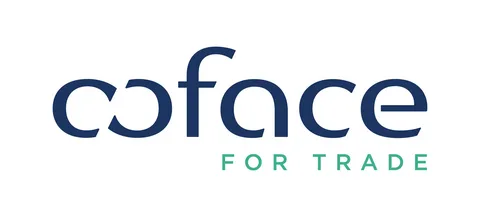Introduction
The insurance sector in India is a vital pillar of the nation’s financial ecosystem, providing risk mitigation, financial security, and economic stability to individuals and businesses. With a history spanning over two centuries, the sector has evolved from rudimentary practices to a sophisticated industry driven by regulatory reforms, technological advancements, and increasing market penetration. This article delves into the historical development, current landscape, regulatory framework, challenges, technological innovations, and future prospects of the Indian insurance industry. It highlights the sector’s role in promoting financial inclusion, supporting economic growth, and addressing emerging risks in a rapidly changing world.
Historical Evolution of Insurance in India
Pre-Independence Era (1818–1947)
The origins of insurance in India trace back to 1818 with the establishment of the Oriental Life Insurance Company in Calcutta by the British, marking the introduction of formal life insurance. General insurance followed in 1850 with the Triton Insurance Company, also in Calcutta, focusing on marine and fire insurance. By the late 19th century, several Indian insurers, such as Bombay Mutual Life Assurance Society (1871), emerged to cater to local needs. However, the sector remained fragmented, with foreign insurers dominating and limited access for the Indian population. The Insurance Act of 1938 introduced regulatory oversight, laying the foundation for a structured industry.
Post-Independence and Nationalization (1947–1999)
After independence, the Indian government prioritized nationalization to align the insurance sector with developmental goals. In 1956, 245 life insurance companies were nationalized to form the Life Insurance Corporation of India (LIC), which became the sole provider of life insurance. Similarly, in 1972, 107 general insurance companies were merged into four public sector entities under the General Insurance Corporation of India (GIC). Nationalization expanded insurance coverage, particularly in rural areas, and directed premiums toward infrastructure and social welfare. However, the monopolistic structure limited competition and innovation, leading to inefficiencies.
Liberalization and Modernization (1999–Present)
The liberalization of the insurance sector in 1999, following the Malhotra Committee’s recommendations, marked a turning point. The Insurance Regulatory and Development Authority of India (IRDAI) was established under the IRDAI Act, 1999, to regulate the sector, protect policyholders, and promote financial stability. Private players, including joint ventures with foreign insurers, were allowed to operate, ending the monopoly of public sector insurers. As of April 2025, the sector comprises 25 life insurers, 34 general insurers, 2 specialized insurers, and 7 reinsurers, reflecting significant diversification and competition.
Structure of the Indian Insurance Sector
The Indian insurance industry is broadly categorized into life insurance, general insurance, and reinsurance, with the following key players:
-
Life Insurance: Dominated by LIC, alongside private insurers like SBI Life, HDFC Life, and ICICI Prudential Life. Products include term plans, endowment policies, and unit-linked insurance plans (ULIPs).
-
General Insurance: Includes public sector firms like New India Assurance and private players like Bajaj Allianz and ICICI Lombard, offering health, motor, property, and travel insurance.
-
Reinsurance: GIC Re leads as the national reinsurer, with foreign reinsurers like Swiss Re and Munich Re operating branches.
-
Specialized Insurers: Entities like ECGC (export credit insurance) and Agriculture Insurance Company of India cater to niche segments.
-
Standalone Health Insurers: Companies like Star Health and Niva Bupa focus exclusively on health insurance.
The IRDAI regulates these entities, ensuring solvency, transparency, and consumer protection. The sector also includes intermediaries like brokers, agents, and bancassurance partners, which enhance distribution.
Regulatory Framework and Governance
The IRDAI plays a central role in shaping the insurance sector, with objectives to:
-
Protect policyholders’ interests through fair practices and grievance redressal mechanisms.
-
Ensure financial stability by enforcing a minimum solvency margin of 150%.
-
Promote industry growth through liberalized foreign direct investment (FDI), increased from 26% in 2000 to 74% in 2021.
-
Enhance financial inclusion by mandating insurers to underwrite policies in rural and social sectors.
Key regulations include the Insurance Act, 1938, and amendments like the Insurance Laws (Amendment) Act, 2015, which introduced composite licensing and increased FDI limits. The IRDAI’s sandbox framework allows insurers to test innovative products, fostering creativity within a controlled environment. The sector also aligns with global standards, adopting principles from the International Association of Insurance Supervisors (IAIS).
Challenges Facing the Insurance Sector
Low Penetration and Density
Despite growth, India’s insurance penetration (premiums as a percentage of GDP) was 4.2% in 2023, and density (per capita premium) was $92, significantly lower than global averages of 6.8% and $682, respectively. Low awareness, affordability issues, and cultural reliance on informal risk mitigation (e.g., family support) hinder market expansion, particularly in rural areas.
Underwriting Losses and Profitability
General insurers, especially public sector firms, face underwriting losses due to high claim ratios in health and motor insurance. A 2019–2023 analysis showed that combined ratios (claims plus expenses as a percentage of premiums) often exceed 100% for public insurers, eroding profitability. Life insurers, while more stable, face challenges from volatile ULIP returns tied to equity markets.
Regulatory Compliance and ESG Risks
Insurers must navigate complex compliance requirements, including anti-money laundering (AML) and know-your-customer (KYC) norms. Additionally, environmental, social, and governance (ESG) risks are gaining prominence. A 2022 study highlighted that Indian insurers lag in integrating climate risk into underwriting, exposing them to losses from natural disasters. Social risks, such as mis-selling, also pose reputational challenges.
Human Resource and Skill Gaps
The sector faces a shortage of skilled actuaries, underwriters, and data analysts, critical for pricing and risk assessment. High attrition among agents, driven by low commissions and lack of training, affects distribution efficiency. Modern HR practices, including upskilling and employee engagement, are essential to address these gaps.
Technological Advancements and Digitalization
InsurTech and Digital Platforms
The rise of InsurTech has transformed the insurance value chain, from underwriting to claims processing. Digital platforms like Policybazaar and Acko leverage data analytics and AI to offer personalized products and streamline customer experiences. By 2025, over 60% of insurance policies are expected to be purchased online, driven by smartphone penetration and UPI-enabled payments.
Artificial Intelligence and Big Data
AI-powered tools enhance risk assessment, fraud detection, and customer service through chatbots and predictive analytics. Big data enables insurers to analyze customer behavior, tailor products, and optimize pricing. For instance, telematics in motor insurance allows premium adjustments based on driving patterns, improving fairness and profitability.
Blockchain and Cybersecurity
Blockchain technology is being explored for secure policy issuance and claims settlement, reducing fraud and paperwork. However, increased digitalization raises cybersecurity risks, with cyberattacks on insurers doubling between 2020 and 2023. Robust cybersecurity frameworks are critical to protect sensitive customer data.
Financial Inclusion and Social Impact
The insurance sector plays a pivotal role in financial inclusion, particularly through microinsurance and government-backed schemes. Programs like Pradhan Mantri Jeevan Jyoti Bima Yojana (PMJJBY) and Pradhan Mantri Suraksha Bima Yojana (PMSBY) provide affordable life and accident cover to millions. As of October 2023, PMJJBY enrolled 175 million people, while PMSBY covered 375 million. Crop insurance schemes like Pradhan Mantri Fasal Bima Yojana (PMFBY) protect farmers against agricultural risks, supporting rural livelihoods. These initiatives align with the IRDAI’s mandate for insurers to serve rural and socially disadvantaged groups.
Performance and Economic Contribution
In 2022–23, the Indian insurance sector collected ₹8.2 trillion in premiums, with life insurance contributing 65% and general insurance 35%. The sector’s assets under management (AUM) reached ₹55 trillion, with LIC alone managing ₹43 trillion. Insurance funds are invested in government securities, infrastructure, and equities, supporting economic development. The sector employs over 3 million people, including agents and intermediaries, and contributes 7% to India’s GDP when including indirect impacts.
Globally, Indian insurers like LIC rank among the top 10 life insurers by AUM, reflecting their financial strength. The sector’s resilience during the COVID-19 pandemic, with a 10.2% premium growth in 2020–21 despite lockdowns, underscores its stability.
Emerging Trends and Future Prospects
Health Insurance Growth
Health insurance is the fastest-growing segment, driven by rising healthcare costs and post-COVID awareness. By 2030, health insurance premiums are projected to reach ₹2 trillion, fueled by demand for comprehensive coverage and critical illness plans.
Climate and Cyber Insurance
Climate change is increasing demand for parametric insurance, which pays out based on predefined weather events, benefiting farmers and businesses. Cyber insurance is also gaining traction as businesses digitize, with premiums expected to grow 25% annually through 2030.





